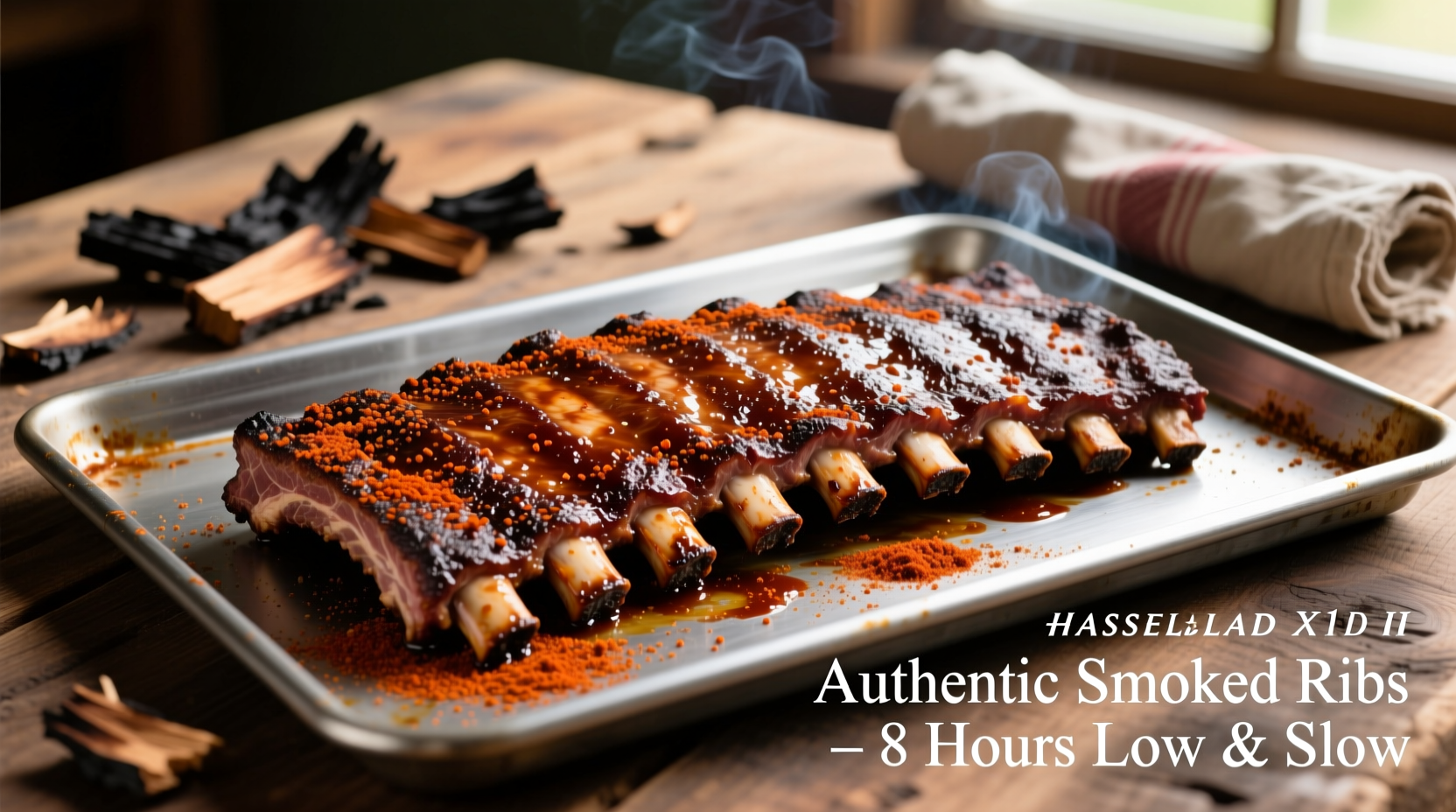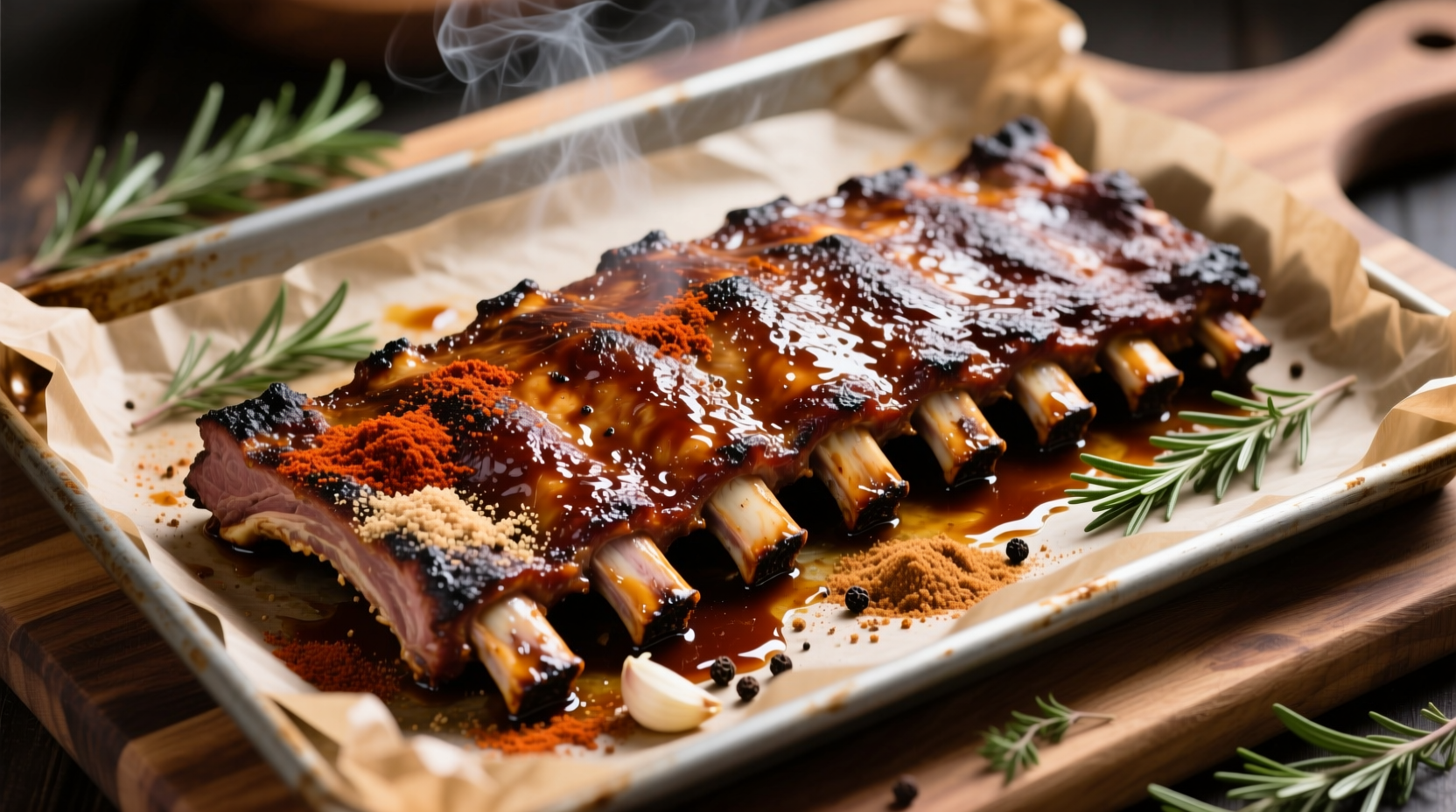There's nothing quite like succulent beef back ribs with that perfect balance of tender meat and crispy exterior. While many assume ribs require a smoker or grill, your oven can deliver restaurant-quality results with precise temperature control and no weather dependence. This guide reveals the exact method professional chefs use to transform tough connective tissue into melt-in-your-mouth perfection through controlled collagen breakdown.
Understanding Beef Back Ribs: The Cut That Makes All the Difference
Beef back ribs (also called "dinosaur ribs" due to their size) come from the rib section near the spine, between the ribeye and loin. Unlike pork ribs, these substantial cuts contain more marbling and connective tissue, requiring specific cooking techniques to achieve tenderness. Each rack typically weighs 2.5-3.5 pounds with 6-8 bones, making them ideal for oven cooking where consistent temperature is critical for collagen conversion.

Essential Preparation: The Foundation of Flavor
Proper preparation separates good ribs from extraordinary ones. Start by removing the tough membrane on the bone side using a butter knife to lift an edge, then grip with paper towel and peel away. This crucial step allows heat and seasoning to penetrate while preventing shrinkage-induced curling during cooking.
Apply a balanced dry rub using the "hand sprinkle" technique: hold 2-3 tablespoons of rub 6 inches above the meat and let it rain down evenly. This ensures uniform coverage without compacting the seasoning. For best results, refrigerate uncovered for 1-12 hours to allow flavors to penetrate and surface drying for better bark formation.
| Cooking Method | Time Required | Texture Result | Best For |
|---|---|---|---|
| Oven (275°F) | 2.5-3 hours | Even tenderness throughout | Consistent results, any weather |
| Smoker (225°F) | 4-5 hours | Smoke ring, complex flavor | Traditional barbecue experience |
| Grill (indirect) | 3-3.5 hours | Slight char, moderate smoke | Outdoor cooking enthusiasts |
The Oven Cooking Timeline: Precision Temperature Control
Follow this scientifically-backed timeline for perfect ribs every time:
- Preheat & Prep (15 min): Set oven to 275°F with rack in center position. Line baking sheet with foil and place wire rack on top.
- Initial Cooking (2.5 hours): Place ribs bone-side down on rack. Insert probe thermometer into thickest meat section.
- Temperature Check (180°F): At this stage, collagen begins converting to gelatin. Continue cooking until 195°F internal temperature.
- High-Heat Finish (30 min): Increase oven to 425°F to caramelize exterior while maintaining interior tenderness.
- Resting (20 min): Tent loosely with foil - this allows juices to redistribute without steaming the bark.
The USDA recommends a minimum safe internal temperature of 145°F for beef, but ribs require higher temperatures (195-203°F) to break down collagen properly. As noted in USDA Food Safety Guidelines, connective tissue in tougher cuts requires extended cooking at lower temperatures to achieve tenderness.
Avoiding Common Oven Rib Mistakes
Many home cooks encounter these pitfalls when preparing beef back ribs:
- Peeking too often: Each oven opening drops temperature by 25-30°F, extending cooking time. Use an oven light instead.
- Incorrect thermometer placement: Insert probe horizontally into meat, avoiding bone contact which gives false readings.
- Rushing the resting phase: Cutting too soon releases precious juices - 20 minutes minimum allows reabsorption.
- Over-saucing too early: Sugar in sauces burns at high temperatures. Apply during final 15 minutes only.
Context Matters: When Oven Cooking Shines
While traditional barbecue methods have their place, oven cooking offers distinct advantages in specific scenarios:
- Rainy or extreme weather conditions where outdoor cooking isn't feasible
- Apartment living without grill access
- When precise temperature control is needed for consistent results
- For beginners learning rib technique before advancing to more complex methods
However, if you're seeking pronounced smoke flavor or authentic barbecue experience, supplement your oven method with 30 minutes of smoke infusion using a stovetop smoker box before transferring to the oven.
Serving and Storage: Maximizing Your Results
Cut between bones with a sharp knife using a gentle sawing motion to maintain presentation. Serve with complementary sides like roasted root vegetables or creamy polenta that balance the rich meat flavor. Leftovers maintain quality for 4 days in airtight containers - reheat gently at 250°F with a splash of broth to restore moisture.











 浙公网安备
33010002000092号
浙公网安备
33010002000092号 浙B2-20120091-4
浙B2-20120091-4